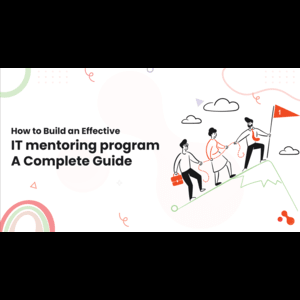Introduction
Development projects, whether they involve software, construction, or any other field, are complex and often subject to unexpected expenses. These unforeseen costs can significantly impact the project’s budget and timeline, leading to delays and financial strain.
Anticipating and managing unexpected expenses is crucial for the successful completion of any development project. This article explores strategies and best practices for predicting and handling unforeseen expenses effectively in development projects.
What are Unexpected Expenses?
Unexpected expenses in software development refer to unforeseen costs that arise during the project lifecycle. These are costs that were not initially accounted for in the project budget. Common sources of unexpected expenses:
- Scope Changes
- Technical Challenges
- Resource Constraints
- Regulatory and Compliance Issues
- Market Fluctuations
- Stakeholder Changes
Here are a few relevant statistics:
- The percentage of ERP implementation projects with budget overrun issues in 2023 was 47%, and in 2022, it was 41%. In 2011 and 2017, it was 74%.
- 70% of organizations tend to have issues with at least one project, as per KPMG
- Studies published in the Portland Business Journal show that 65% to 80% of projects fail to meet their objectives and end up costing far more than the initial budget.
- Approximately 75% of business and IT executives anticipate that their software projects will fail.
Strategies To Combat Unexpected Expenses
Unexpected expenses can have a profound impact on a project’s budget, timeline, and overall success. Here are essential strategies to anticipate unexpected expenses.
Conduct thorough planning and risk assessment:
- Identify potential risks: Perform a detailed risk assessment at the beginning of the project to identify possible areas where unexpected expenses might arise.
- Develop a contingency plan: Create a contingency plan that outlines steps to mitigate any risks you identify. Allocate a portion of the budget specifically for unforeseen expenses.
- Detailed scope definition: Clearly define the project scope, including objectives, deliverables, and boundaries. Use techniques like Work Breakdown Structure (WBS) to break down the project into manageable components.
Establish a realistic budget:
- Include buffer amounts: When setting the budget, include buffer amounts for each phase of the project to cover any unexpected costs.
- Use historical data: Leverage historical data from similar projects to anticipate possible cost overruns and set a more accurate budget.
- Budget Contingency: Allocate a contingency budget to cover unexpected expenses. The contingency amount should be based on the project’s complexity, historical data, and identified risks.
- Implement regular monitoring and reporting.
- Track progress and expenses: Use project management tools to track project progress and expenses regularly. This helps identify any deviations from the budget early on.
- Conduct regular reviews: Schedule regular financial reviews and updates to monitor the budget expenditures. Ensure that any emerging issues are addressed promptly.
- Risk management: Conduct a thorough risk assessment to identify potential risks and their impact on the project. Develop a risk management plan that includes strategies for mitigating identified risks and contingencies and addressing them if they occur.
- Engage stakeholders early and often.
- Clear communication: Maintain open and frequent communication with all stakeholders to ensure everyone is aware of the project’s status and any potential financial concerns.
- Set expectations: Clearly define the project scope and budget constraints with stakeholders from the start to manage expectations and reduce the likelihood of scope creep.
Prioritize essential features:
- Focus on core functionality: Prioritize the development of essential features that deliver the most value to the project. This will help manage resources more efficiently and avoid unnecessary expenses.
- Implement phased delivery: Consider a phased delivery approach, where core features are developed first, followed by additional features if the budget allows.
Flexible Project Management:
- Iterative Development: Adopt an agile development approach that allows for iterative progress. Frequently reassess the project requirements and budget.
- Flexibility: Agile methodology provides the flexibility to make adjustments to the project plan based on feedback and evolving needs This reduces the risk of unexpected costs.
- Expert Consultation: Consult with experts and experienced team members to validate cost estimates and identify potential areas of concern. Their insights can help refine estimates and highlight potential risks.
Optimize resource allocation
- Efficient use of resources: Ensure that resources are allocated efficiently to avoid wastage and ensure that every dollar spent contributes to project success.
- Leverage expertise: Use experienced developers and project managers who can anticipate potential issues and navigate them effectively.
Maintain a change management process:
- Formal change requests: Implement a formal change management process where any proposed changes to the project scope or requirements are reviewed and approved, ensuring that their impact on the budget is assessed.
- Document changes: Keep detailed records of all changes and their financial implications to maintain transparency and control over the project budget.
Regularly re-evaluate project scope:
- Adjust as needed: Regularly re-evaluate the project scope to ensure it aligns with the budget and project goals. Be prepared to make adjustments if necessary to stay within budget.
- Avoid scope creep: Vigilantly guard against scope creep by adhering to the defined project scope and managing any changes through the established change management process.
Post-project review:
- Analyze and learn: Conduct a post-project review to analyze what went well and what didn’t. Focus on how unexpected expenses were handled.
Technology and Tools
- Project Management Software: Invest in advanced project management software that provides real-time visibility into project performance, expenses, and risks. Use these tools to streamline processes and enhance decision-making.
- Collaboration Platforms: Utilize collaboration platforms to facilitate communication and collaboration among team members and stakeholders. These platforms can streamline workflows and improve coordination.
- Automation and AI: Explore the use of automation and artificial intelligence (AI) to enhance project management processes. AI-powered tools can assist with risk identification, cost estimation, and resource allocation.
Real-world example:
Acquaint Softtech development of a website and Mobile Application for SuperFi. Nick Spiller, outsourced their requirements to us because they strongly believe in outsourcing. We developed a feature-rich FinTech app. It was meant for people in the UK to manage their debt.
We detected that the tight deadline and few changes in the scope were going to lead to unforeseen costs. At Acquaint Softtech, we always have a contingency and account for the unexpected. Our skill and experience were evident in how we successfully steered clear of budget overrun by handling the unexpected costs.
You can trust us with your software development requirements. Our team of top-notch developers has the necessary skills and experience to deliver cutting-edge solutions.
Seek Help From The Experts
A professional software development outsourcing company like Acquaint Softtech will have the expertise to detect unforeseen expenses. In fact, they also implement the right strategies to prevent it.
It is vital to understand the root causes of unexpected costs. One of the most common issues is a lack of initial planning. Scope creep and a lack of a contingency plan are also some of the other issues. At Acquaint Softtech, we implement the best strategies to anticipate and manage the unexpected costs of software development.
A fitting quote –
“Testers don’t like to break things; they like to dispel the illusion that things work.” – Cem Kaner – James Bach – Bret Pettichord
Hire remote developers from Acquaint Softtech to keep unforeseen costs at bay. Gain an upper edge over your competitors by trusting the professionals.
Conclusion
Anticipating and handling unexpected expenses in development projects is essential for ensuring cost-effectiveness and project success. By understanding the familiar sources of unforeseen costs and implementing strategies for proactively managing risk, effective communication, and financial control, organizations can mitigate the impact of unforeseen costs.
Comprehensive project planning, realistic cost estimation, and flexible project management approaches are vital in anticipating potential issues and preparing for them. When unexpected expenses do arise, proactive risk mitigation, transparent communication, and practical financial management can help address these challenges and keep the project on track.
Learn from past experiences, continuously improve processes, and leverage advanced tools and technologies. This way organizations can enhance their ability to anticipate and handle unexpected expenses in future development projects. Ultimately, a proactive and prepared approach will lead to more successful, cost-effective projects that deliver value to stakeholders and achieve organizational goals.










